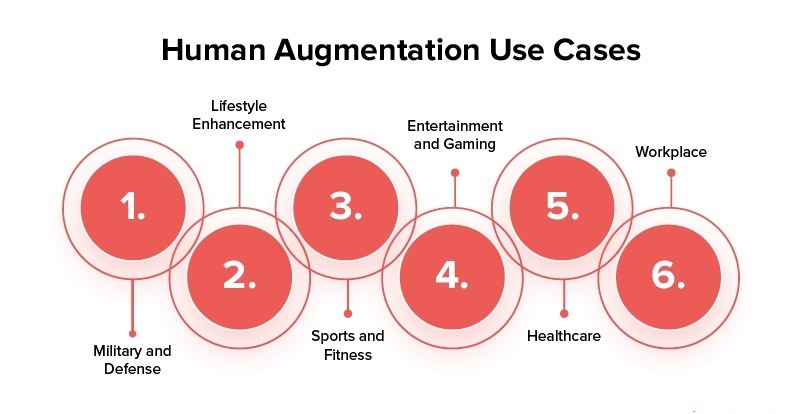Introduction
Biohacking. The term itself conjures up images of cyborgs and implants. But biohacking can be much simpler! In its essence, biohacking is using technology to understand and optimize our bodies. This article explores a simple biohacking project using a common tool: the Fitbit.
Biofeedback 101

Biofeedback is a technique that allows us to monitor and become aware of our body's internal processes. Think of it as a window into your biology. Common biofeedback applications include heart rate, skin temperature, and muscle tension.
The Fitbit: Your Biofeedback Companion
The Fitbit, a popular fitness tracker, can be a powerful biofeedback tool. Here's how:
Heart Rate Variability (HRV): HRV measures the variation between heartbeats. Higher HRV is generally associated with better health and stress resilience. Many Fitbits display HRV data, allowing you to track stress levels and recovery.
Sleep Tracking: Understanding your sleep patterns is crucial for biohacking. Fitbits track sleep duration and quality, allowing you to identify areas for improvement.
Activity Monitoring: Biohacking often involves optimizing performance. Fitbits track steps, distance, and calories burned, providing valuable data for fitness enthusiasts.
Biohacking with your Fitbit Data
So you've collected biofeedback data from your Fitbit. Now what?
Identify Trends: Track your data over time. Look for patterns that might indicate stress triggers or sleep disruptions.
Set Goals: Use your data to set personalized goals for sleep improvement, stress management, or exercise performance.
Biofeedback Hacks: Experiment with simple biohacks based on your data. For example, try meditation apps to improve HRV or adjust your sleep schedule for better sleep quality.
DIY Sleep Optimization Chamber: Hack Your Way to Deep Sleep
Ever toss and turn all night, yearning for a restful slumber? Imagine a sleep sanctuary – a room optimized for deep sleep using the power of the Internet of Things (IoT). This article explores creating your DIY sleep chamber, guiding you through the science behind key elements and their integration with platforms like Raspberry Pi or Arduino.

The Science of Sleep Optimization
Our sleep environment plays a crucial role in sleep quality. Here's how some elements can be biohacked for better sleep:
- Light: Darkness triggers melatonin production, a hormone essential for sleep. Smart lights can be programmed to dim gradually in the evening, mimicking sunset and promoting melatonin release.
Temperature: A slightly cool room (around 65°F) is ideal for sleep. Smart thermostats can automatically adjust room temperature to create this optimal sleep environment.
Noise: Disruptive noises can fragment sleep. White noise machines can mask these noises and create a calming soundscape. Smart white noise machines allow for customization of sound profiles.
Taking it Further
This is just the beginning! Here are some ways to enhance your sleep chamber:
Smart speakers: Integrate a smart speaker to control your sleep chamber with voice commands.
Biofeedback integration: Explore incorporating sleep trackers or smart mattresses that monitor sleep quality and adjust the environment accordingly.
Mobile app control: Create a mobile app to control your sleep chamber remotely and monitor sleep data.
Safety and Responsible Biohacking
Remember, safety is paramount. Ensure proper ventilation in your sleep chamber and avoid electromagnetic interference with medical devices. Start with simple adjustments and gradually experiment with different settings to find what works best for you.
Biofeedback Gaming: Mind Control Takes Over Your Play
Imagine controlling a video game character with your thoughts! Biofeedback gaming, also known as neurogaming, makes this a reality. This article dives into the world of EEG headsets, the technology that translates brainwaves into gameplay, and explores exciting biohacking projects that push the boundaries of entertainment and even delve into therapeutic applications.
Brainwaves at Your Fingertips (or Rather, in Your Headset)
The key to biofeedback gaming lies in electroencephalography (EEG) headsets. These headsets are worn on the scalp and contain electrodes that detect electrical activity in your brain. Different brainwave frequencies are associated with various mental states. For example, alpha waves are dominant during relaxation, while beta waves indicate focus.
Biofeedback gaming software interprets these brainwave signals and translates them into game controls. Imagine raising your focus level (increasing beta waves) to make your character run faster, or achieving a calm state (increasing alpha waves) to unlock a special power. The possibilities are vast and constantly evolving.
Biohacking Fun: From Mind-controlled Racing to Meditation Games
Biofeedback gaming offers exciting biohacking opportunities:
Enhanced Entertainment: Games like Neuro Racer allow players to control the speed of their car using brainwaves. Imagine a racing game where intense focus translates into a nitro boost!
Meditation Made Fun: Games like MindLight use biofeedback to guide players towards a meditative state. Biofeedback provides real-time feedback on their brainwave activity, helping them achieve a calmer mind.
Therapeutic Applications: Biofeedback games are being explored for therapeutic applications like ADHD treatment. Games that reward focus and relaxation can help train the brain to regulate these states.
Biohacking Your Own Neurogame
The biohacking community is actively developing DIY neurogaming projects. Here's a taste:
- OpenBCI: This open-source EEG platform allows developers to create custom biofeedback applications, including games. The community shares various projects online, from basic concentration games to mind-controlled music creation.
- Arduino-based Games: Makers are using Arduino microcontrollers to create simple biofeedback games. EEG data can be processed by Arduino to control lights, sounds, or even simple on-screen actions.
The Future of Biofeedback Gaming
Biofeedback gaming is still in its early stages, but the potential is immense. Imagine games that adapt to your emotional state, or virtual reality experiences controlled entirely by your thoughts. As EEG technology advances and biohackers push the boundaries, the lines between player and character will continue to blur, creating truly immersive and personalized gaming experiences.
A Word of Caution
While exciting, biofeedback gaming is a nascent field. EEG technology might not be perfect, and the effectiveness of therapeutic applications requires further research. Approach biohacking projects with a spirit of exploration and prioritize safety when experimenting with DIY setups.
Conclusion
Biohacking isn't about superhuman feats. It's about understanding and optimizing your own biology. With a simple tool like a Fitbit, you can embark on your own biohacking journey to unlock your body's full potential.
For more information contact : support@mindnotix.com
Mindnotix Software Development Company


 AI-Taxi App
AI-Taxi App AI-Food App
AI-Food App AI-Property Mgmt App
AI-Property Mgmt App AI-CRM
AI-CRM AI-Fantasy App
AI-Fantasy App
 Web Development
Web Development App Development
App Development Business & Startup
Business & Startup Hire Developer
Hire Developer
 Digital Marketing
Digital Marketing Lead-generation
Lead-generation Creative Agency
Creative Agency Branding Agency
Branding Agency Augmented Reality
Augmented Reality Virtual Reality
Virtual Reality Internet of Things
Internet of Things Artificial Intelligence
Artificial Intelligence Blockchain
Blockchain Chatbot
Chatbot



